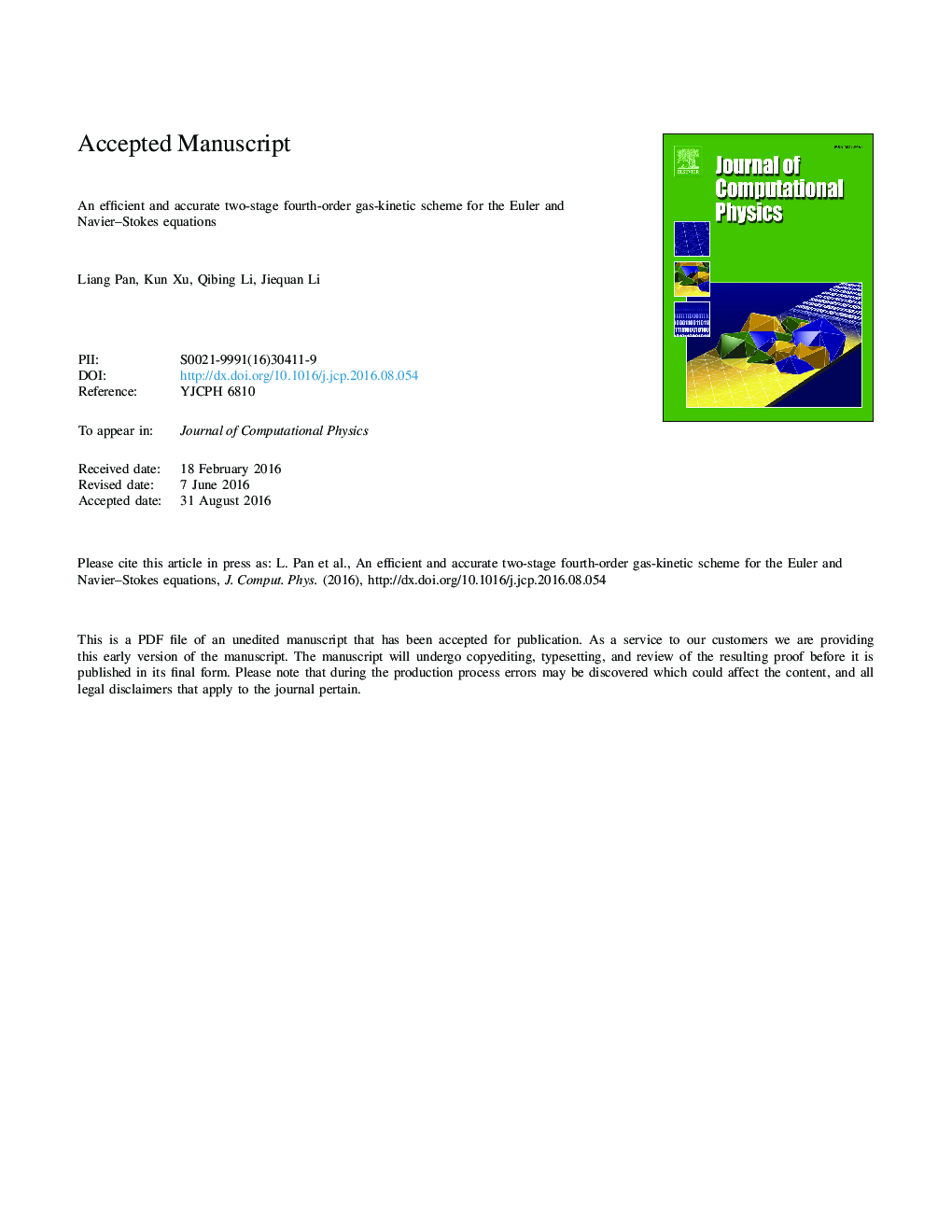| Article ID | Journal | Published Year | Pages | File Type |
|---|---|---|---|---|
| 4967854 | Journal of Computational Physics | 2016 | 36 Pages |
Abstract
For computational fluid dynamics (CFD), the generalized Riemann problem (GRP) solver and the second-order gas-kinetic scheme (GKS) provide a time-accurate flux function starting from a discontinuous piecewise linear flow distributions around a cell interface. With the adoption of time derivative of the flux function, a two-stage Lax-Wendroff-type (L-W for short) time stepping method has been recently proposed in the design of a fourth-order time accurate method for inviscid flow [21]. In this paper, based on the same time-stepping method and the second-order GKS flux function [42], a fourth-order gas-kinetic scheme is constructed for the Euler and Navier-Stokes (NS) equations. In comparison with the formal one-stage time-stepping third-order gas-kinetic solver [24], the current fourth-order method not only reduces the complexity of the flux function, but also improves the accuracy of the scheme. In terms of the computational cost, a two-dimensional third-order GKS flux function takes about six times of the computational time of a second-order GKS flux function. However, a fifth-order WENO reconstruction may take more than ten times of the computational cost of a second-order GKS flux function. Therefore, it is fully legitimate to develop a two-stage fourth order time accurate method (two reconstruction) instead of standard four stage fourth-order Runge-Kutta method (four reconstruction). Most importantly, the robustness of the fourth-order GKS is as good as the second-order one. In the current computational fluid dynamics (CFD) research, it is still a difficult problem to extend the higher-order Euler solver to the NS one due to the change of governing equations from hyperbolic to parabolic type and the initial interface discontinuity. This problem remains distinctively for the hypersonic viscous and heat conducting flow. The GKS is based on the kinetic equation with the hyperbolic transport and the relaxation source term. The time-dependent GKS flux function provides a dynamic process of evolution from the kinetic scale particle free transport to the hydrodynamic scale wave propagation, which provides the physics for the non-equilibrium numerical shock structure construction to the near equilibrium NS solution. As a result, with the implementation of the fifth-order WENO initial reconstruction, in the smooth region the current two-stage GKS provides an accuracy of O((Îx)5,(Ît)4) for the Euler equations, and O((Îx)5,Ï2Ît) for the NS equations, where Ï is the time between particle collisions. Many numerical tests, including difficult ones for the Navier-Stokes solvers, have been used to validate the current method. Perfect numerical solutions can be obtained from the high Reynolds number boundary layer to the hypersonic viscous heat conducting flow. Following the two-stage time-stepping framework, the third-order GKS flux function can be used as well to construct a fifth-order method with the usage of both first-order and second-order time derivatives of the flux function. The use of time-accurate flux function may have great advantages on the development of higher-order CFD methods.
Keywords
Related Topics
Physical Sciences and Engineering
Computer Science
Computer Science Applications
Authors
Liang Pan, Kun Xu, Qibing Li, Jiequan Li,
